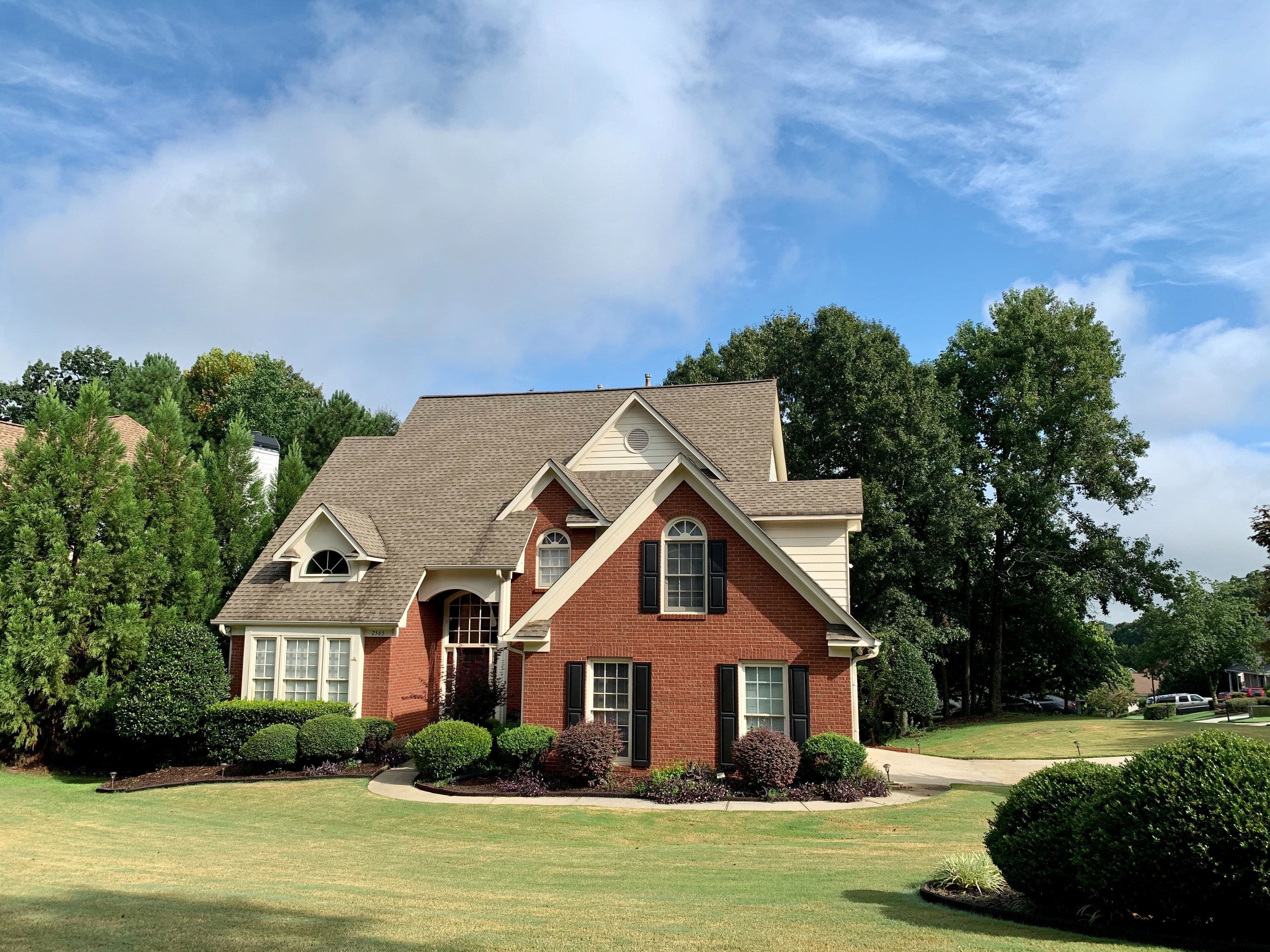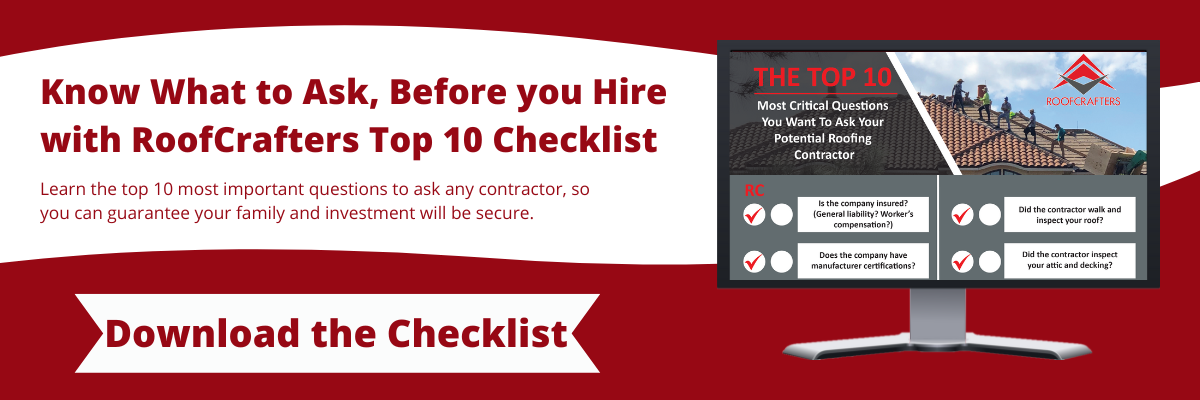
We’ve all heard the phrase: Into every life, a little rain must fall. But when rain starts falling through your ceiling, things get complicated, and fast.
A leaky roof isn’t just an annoyance. Left unresolved, even a minor leak can cause serious damage to your home, from rotted wood and black mold to electrical issues and costly structural repairs. The good news? A leak doesn’t always mean you need a full roof replacement.
At RoofCrafters, we’ve spent over 30 years helping homeowners make the right call between roof repairs and replacements. In this article, we’ll walk you through a 7-step checklist to help you determine whether your roof needs a simple fix or a full replacement. Let’s dive in!
7-Point Checklist: Do You Need a Roof Repair or Replacement?

Let’s delve into a 7-point checklist to help you better understand when a repair just isn’t enough.
1. Inspect for Visible Damage
Before assuming your roof needs to be replaced, start with a basic visual inspection. Look for:
- Cracked, curled, or missing shingles
- Damaged flashing around chimneys, skylights, or vents
- Signs of sagging or rot
If it’s safe to do so, inspect your roof up close. Not all leaks are caused by missing shingles - damaged flashing or worn pipe seals are also common culprits. When in doubt, schedule a professional roof inspection!
2. Check Your Gutters and Downspouts

Clogged gutters can mimic the symptoms of a failing roof. If water can’t properly drain, it may back up under shingles and leak into your home. Before blaming your roof, make sure your gutters are clean and functioning properly.
3. Look for Tree Damage
Trees hanging over your roof can cause trouble, especially during storms. Look for:
- Fallen limbs on the roof
- Granule loss or torn shingles beneath tree branches
- Overhanging limbs that could pose a future threat
If you’re seeing damage and have nearby trees, trimming them back could help prevent future problems.
4. Consider the Age of Your Roof

A properly maintained roofing system should last around 15 to 20 years or more, provided it was installed properly using quality material. However, if your local roofing company decided to use substandard material, or if your roof is more than a couple of decades old, chances are it’s probably time to replace rather than repair your old roof.
That being said, depending on the extent of damage, sometimes it’s a better bet to replace rather than repair a newer roof, particularly if the damage was done suddenly. Sudden damage caused by wind and weather is usually covered by your homeowner’s insurance, whereas your roof worn out from old age, isn’t covered.
5. Know When Reroofing Is an Option
Reroofing (placing new shingles over existing ones) can be a cost-effective alternative to full replacement. But it’s not always possible. Avoid reroofing if:
- Your current roof has two or more layers
- There’s soft decking or moisture damage underneath
- The structure can’t support the added weight
A licensed roofer can evaluate whether reroofing is viable for your home.
6. Evaluate the Extent of Shingle Damage

While replacing damaged shingles with new ones isn’t all that complicated before you climb up on your roof to repair yourself, there are a few things you need to know. There’s a big difference between a few damaged or missing shingles and a leak that has caused damage to several layers of your current roofing system.
A licensed roofer will not only be able to assess and repair the affected area, but he will also be able to determine the extent of the damage and how to mitigate it. Plus, working on a roof is a dangerous environment for an amateur. That’s why professional roofers wear safety harnesses.
7. Decide: Repair or Replace?
Still unsure? Let a professional guide you. Factors like:
- Age of your roof
- Size and cause of the damage
- Insurance coverage
…all play a role in determining the best path forward. In many cases, homeowners choose repair for isolated damage and replacement for widespread or storm-related issues.
Don’t Wait to Fix That Leak
Roof leaks don’t wait for your schedule or budget. The longer you leave a leak unattended, the more damage it can cause to drywall, insulation, wiring, and even your home’s foundation.
If you’re still unsure about your next move, RoofCrafters can help. Our licensed roofing professionals will assess your roof and offer honest, transparent recommendations based on your home’s needs, not a sales pitch.
Before you hire a roofing contractor, make sure you’re asking the right questions. Download RoofCrafters’ Top 10 Roofer Checklist to:
- Vet potential contractors
- Understand what to expect during repairs or replacement
- Avoid scams and subpar workmanship
Bonus: Download Our Free “Top 10 Roofer Checklist”
In the meantime, continue learning about your roofing project with our article, "How Much Does It Cost to Fix a Leaky Roof?"
My name is Mitch, and I have over 10 years of roofing experience. I enjoy my career in the service industry because I love helping others take care of their homes and businesses. With over 10 years in the roofing industry, my success comes from my honesty and integrity during my roof inspections. I do my best to listen to the needs of my clients and strive to provide an awesome client experience.




